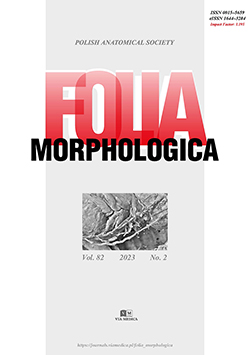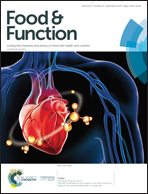 “The aim of this work was to enhance the acetylcholinesterase (AChE)-inhibitory activity of a pepsin-produced hemp seed protein hydrolysates (HPH) through reverse-phase HPLC separation followed by identification of peptide sequences present in the most active fraction. The HPH was separated into eight fractions (F1-F8) with F7 exhibiting significantly (p < 0.05) the strongest (97.5%) in vitro inhibition of electric eel AChE (eeAChE) activity in comparison to 53.8% for HPH. The HPH consisted mostly of low molecular weight peptides of < 11 amino acid residues and most contained at least one hydrophobic amino acid. Kinetics of enzyme inhibition revealed a mixed-type inhibition of eeAChE activity by HPH whereas F7 acted through an uncompetitive mode; in contrast inhibition of human AChE by HPH and F7 was uncompetitive. The stronger inhibitory potency of the F7 peptides fraction against both enzymes was confirmed through reduced maximal velocity, catalytic efficiency, and inhibition constant values when compared to the HPH.
“The aim of this work was to enhance the acetylcholinesterase (AChE)-inhibitory activity of a pepsin-produced hemp seed protein hydrolysates (HPH) through reverse-phase HPLC separation followed by identification of peptide sequences present in the most active fraction. The HPH was separated into eight fractions (F1-F8) with F7 exhibiting significantly (p < 0.05) the strongest (97.5%) in vitro inhibition of electric eel AChE (eeAChE) activity in comparison to 53.8% for HPH. The HPH consisted mostly of low molecular weight peptides of < 11 amino acid residues and most contained at least one hydrophobic amino acid. Kinetics of enzyme inhibition revealed a mixed-type inhibition of eeAChE activity by HPH whereas F7 acted through an uncompetitive mode; in contrast inhibition of human AChE by HPH and F7 was uncompetitive. The stronger inhibitory potency of the F7 peptides fraction against both enzymes was confirmed through reduced maximal velocity, catalytic efficiency, and inhibition constant values when compared to the HPH.
PRACTICAL APPLICATIONS: The use of natural products for the prevention or treatment of human diseases continues to be an area of intense research activities. Food protein-derived peptides obtained through enzymatic hydrolysis of hemp seed proteins were shown in vitro to be strong inhibitors of activities of both the eel and human forms of acetylcholinesterase (AChE). AChE is an important therapeutic target because excessive activity of this enzyme is a causative factor of neurodegenerative diseases such as dementia and Alzheimer’s. This work showed that peptides in the most active fraction are small in sizes, which may favor their absorption into blood circulation and possible permeation of the blood-brain barrier. Therefore, the hemp seed peptides are potential agents that can be used to formulate functional foods and nutraceuticals against neurodegenerative diseases.”


 “Uremia leads to a number of metabolic and hormonal disorders including defective carbohydrate metabolism.
“Uremia leads to a number of metabolic and hormonal disorders including defective carbohydrate metabolism. “The endocannabinoid system (ECS) consists particularly of
“The endocannabinoid system (ECS) consists particularly of 
 “The healthy benefits of hemp (
“The healthy benefits of hemp ( “The recent liberalisation of cannabis regulation has increased public and scientific debate about its potential benefits and risks. A key focus has been the extent to which
“The recent liberalisation of cannabis regulation has increased public and scientific debate about its potential benefits and risks. A key focus has been the extent to which  “Research in the cannabinoid field, namely on phytocannabinoids, the endogenous cannabinoids anandamide and 2-arachidonoyl glycerol and their metabolizing and synthetic enzymes, the cannabinoid receptors, and anandamide-like cannabinoid compounds, has expanded tremendously over the last few years. Numerous endocannabinoid-like compounds have been discovered. The Cannabis plant constituent
“Research in the cannabinoid field, namely on phytocannabinoids, the endogenous cannabinoids anandamide and 2-arachidonoyl glycerol and their metabolizing and synthetic enzymes, the cannabinoid receptors, and anandamide-like cannabinoid compounds, has expanded tremendously over the last few years. Numerous endocannabinoid-like compounds have been discovered. The Cannabis plant constituent  “Hemp (
“Hemp ( “Compounds present in Cannabis sativa such as phytocannabinoids and terpenoids may act in concert to elicit therapeutic effects.
“Compounds present in Cannabis sativa such as phytocannabinoids and terpenoids may act in concert to elicit therapeutic effects.